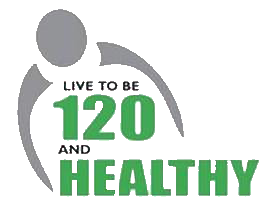By Dr. Mercola
Collectively, microorganisms outweigh the human population by 100 million times. They’re all around you, and inside you. Your gastrointestinal tract alone houses some 100 trillion bacteria.
The microorganisms in your gut, commonly referred to as your microbiome, are responsible for about 80 percent of your immune system function, and these gut bacteria outnumber your body’s cells by about 10 to one.
As noted in the featured Frontline documentary, The Trouble With Antibiotics,1American farmers routinely use antibiotics to make their livestock grow bigger, faster (in addition to preventing disease caused by cramped, filthy quarter, and an unnatural diet). After decades of this practice, antibiotic-resistance in humans has risen substantially.
We’ve also come to realize that, scientifically, we’ve barely scratched the surface with regards to everything there is to know about bacteria; how they work, and why we might actually need them.
Far from being a scourge, bacteria of all kinds serve important roles in human health. It’s a double-edged sword. On the one hand we need bacteria; on the other, when our microbiome becomes unbalanced, it can kill us.
Microbes Rule…
For example, it is microbes in the soil that are largely responsible for plant growth and nutrient uptake. Adding plant nutrients without regard for nourishing these microbes is a recipe for crop failure in the long-term.
In recent years, we’ve also started to gain a greater understanding of the role gut microbes play in human health and disease—and it’s a very significant one.
We’re also seeing that indiscriminately killing bacteria in an effort to achieve cleanliness and health comes at a steep price. In fact, antibiotic resistance has quickly turned into a worldwide health threat of massive proportions.
According to the US Centers for Disease Control and Prevention2 (CDC), two million American adults and children become infected with antibiotic-resistant bacteria each year, and at least 23,000 of them die as a direct result.
Methicillin resistant Staphylococcus aureus, better known as MRSA, alone kills more Americans each year than the combined total of emphysema, HIV/AIDS, Parkinson’s disease, and homicide.3
The victims include young, otherwise healthy people, raising suspicions that theMRSA infections originate from the food they eat. Drug-resistant tuberculosis, urinary tract infections, and gonorrhea are also on the rise.
As reported by Frontline, researchers have found that people living close to confined animal feeding operations (CAFOs) also suffer drug-resistant infections at much higher rates than others, again suggesting that antibiotic-resistant bacteria originate from large-scale agriculture.
We’ve Wasted One of Medicine’s Most Important Tools
What we’re seeing is the evolution of bacteria—and we’ve catalyzed that evolution. As it turns out, the use of antibiotics in agriculture breeds these hardy bacteria very efficiently. Over time, microorganisms have learned to teach each other how to outsmart the best pharmaceutical drugs we have to offer, and they are winning the battle.
Many experts have issued strong warnings, saying that we are quickly reverting back to the pre-antibiotic age when some of the most important advances in modern medicine – intensive care, organ transplants, care for premature babies, and surgeries – will no longer be possible.
We’re already very close to the end of the road where ALL antibiotics fail, and once that happens, it will be the end of modern medicine as we know it. Common illnesses such as bronchitis or strep throat may turn into deadly sepsis.
Surgeries previously considered low risk or “routine,” such as hip replacements, might suddenly be too risky without antibiotics, and complex surgeries like organ transplants may not be survivable anymore.
One of the most prestigious research hospitals in the US recently struggled with an outbreak of a highly lethal antibiotic-resistant superbug called Klebsiella pneumoniae carbapenemase (KPC)4—a bacterium that has developed resistance to multiple drugs. KPC is not alone in this feat.
A 2013 paper by the Center for Science in the Public Interest (CSPI) titled “Antibiotic Resistance in Foodborne Pathogens,”5 report that between 1973 and 2011, there were 55 antibiotic-resistant foodborne outbreaks in the US, and more than half of them involved pathogens resistant to five or more antibiotics.
How Did This Epidemic of Antibiotic Resistance Occur?
Antibiotic overuse and inappropriate use in medicine is one factor. As much as half of all antibiotics used in clinics and hospitals are inappropriately used.6 But the routine use of antibiotics in agriculture is likely at the very heart of the matter.
First of all, agriculture accounts for about 80 percent of all antibiotics used in the US, so it’s really a primary source of antibiotic exposure. Second, it is the continuous use of low dose antibiotics that really allows the bacteria to survive and become increasingly hardy and drug resistant.
At present, 24.6 million pounds of antibiotics are administered to livestock in the US every year for purposes other than treating disease, such as making the animals grow bigger faster. When eating meat from antibiotic-treated animals, you consume low dose antibiotics. For example, 80 different antibiotics are allowed in cows’ milk!
Treated animal products may also be contaminated with antibiotic-resistant bacteria. According to the US Centers for Disease Control and Prevention (CDC), 22 percent of antibiotic-resistant illness in humans is in fact linked to food. In the words of associate director of the CDC Dr. Srinivasan:7
“The more you use an antibiotic, the more you expose a bacteria to an antibiotic, the greater the likelihood that resistance to that antibiotic is going to develop. So the more antibiotics we put into people, we put into the environment, we put into livestock, the more opportunities we create for these bacteria to become resistant.”
In the featured documentary, researchers using state of the art genome sequencing were able to compare E.coli samples found on supermarket meat with E.coli samples collected from patients with drug-resistant urinary tract infections. In this way, they were able to genetically link more than 100 urinary tract infections to tainted supermarket meat products…
Avoiding antibiotic-resistance is but one of several good reasons to avoid meats and animal products from animals raised in confined animal feeding operations (CAFOs). This is partly why grass-fed and grass-finished antibiotic- and hormone-free meat is the ONLY type of meat I recommend—again because it is repetitive low-dose exposure that allows bacteria to adapt and develop strong resistance. Most Americans eat meat several times a week, and that kind of exposure can add up.
The US Food and Drug Administration (FDA), meanwhile, has known for more than 12 years that routine use of antibiotics in livestock is harmful to human health, yet it has taken no meaningful action. Promptings to voluntarily reduce usage has not resulted in positive change. On the contrary, the most recent FDA report shows that antibiotic usage actually increased by 16 percent between 2009 and 2012, and nearly 70 percent of the antibiotics used are considered “medically important” for humans.8
Another contributing factor is the genetic engineering of our foods. As Jeffrey Smith explained at a recent GMO Summit, it’s possible that GMOs from food can transfer genetic material to your normal gut bacteria, conferring antibiotic resistance and turning them into superbugs. GMOs have been scientifically proven to activate and deactivate hundreds if not thousands of genes, and we have no idea about the risks associated with this, as no one has studied it.
What’s the Solution?
The impending superbug crisis has a four-prong solution:
- Improved infection prevention, with a focus on strengthening your immune system naturally. Avoiding sugars, processed foods, and grains is foundational for this. Adding in traditionally fermented and cultured foods is equally important, as this will help optimize your microflora
- More responsible use of antibiotics in human medicine
- Limiting use of antibiotics in livestock animals, along with a return to biodynamic farming and a complete overhaul of our food system
- Innovative new approaches to the treatment of infections from all branches of science, natural as well as allopathic. Fortunately, Mother Nature gives us a cornucopia of botanicals with inherent antibiotic activity that does not promote resistance like antibiotic drugs do. Natural compounds with antimicrobial activity include:
Garlic Cinnamon Oregano extract Colloidal silver Manuka honey(Clinical trials have found that Manuka honey can effectively eradicate more than 250 clinical strains of bacteria, including some resistant varieties, such as MRSA) Probiotics andfermented foods Echinacea Sunlight andvitamin D
What You Can Do Right Now to Avoid Promoting Antibiotic Resistance
When it comes to avoiding antibiotic-resistant disease, one major key is to keep your immune system healthy and strong. This is primarily done through lifestyle choices such as proper diet, sleep, stress management, and exercise. In terms of diet, remember to opt for whole organic foods, raised without antibiotics and preferably locally sourced.
Optimizing your own immune system function will help keep you safe from developing a potentially lethal infection in the first place. I also urge you to consider the following strategies, which will help curtail the spread of antibiotic resistance in general. While the problem of antibiotic resistance needs to be stemmed through public policy on a nationwide level, the more people who get involved on a personal level, the better.
Such strategies include:
- Use antibiotics only when absolutely necessary. For example, antibiotics are typically unnecessary for most ear infections, and they do NOT work on viruses. They only work on bacterial infections, and even then, they’re best reserved for more serious infections.
- Avoid antibacterial household products, such as antibacterial soaps, hand sanitizers, and wipes, etc., as these also promote antibiotic resistance by allowing the strongest bacteria to survive and thrive.
- Properly wash your hands with warm water and plain soap, to prevent the spread of bacteria. Be particularly mindful of washing your hands and kitchen surfaces after handling raw meats, as about half of all meat sold in American grocery stores is likely to be contaminated with pathogenic bacteria. Avoid antibiotic soaps that typically have dangerous chemicals like triclosan.
- Take common-sense precautions in the kitchen: Kitchens are notorious breeding grounds for disease-causing bacteria, courtesy of contaminated meat products, including antibiotic-resistant strains of E-coli. To avoid cross-contamination between foods in your kitchen, I suggest adhering to the following recommendations:
- Use a designated cutting board, preferably wood, not plastic, for raw meat and poultry, and never use this board for other food preparation, such as cutting up vegetables. Color coding your cutting boards is a simple way to distinguish between them
- To sanitize your cutting board, be sure to use hot water and detergent. Simply wiping it off with a rag will not destroy the bacteria
- For an inexpensive, safe, and effective kitchen counter and cutting board sanitizer, use 3% hydrogen peroxide and vinegar. Keep each liquid in a separate spray bottle, and then spray the surface with one, followed by the other, and wipe off
- Coconut oil can also be used to clean, treat, and sanitize your wooden cutting boards. It’s loaded with lauric acid that has potent antimicrobial actions. Olive oil is another alternative. The fats will also help condition the wood
- Purchase organic, antibiotic-free meats and other foods. Reducing the spread of antibiotic-resistant bacteria is a significant reason for making sure you’re only eating grass-fed, organically-raised meats and animal products. Besides growing and raising your own, buying your food from responsible, high-quality, sustainable sources is your best bet, and I strongly encourage you to support the small family farms in your area.


